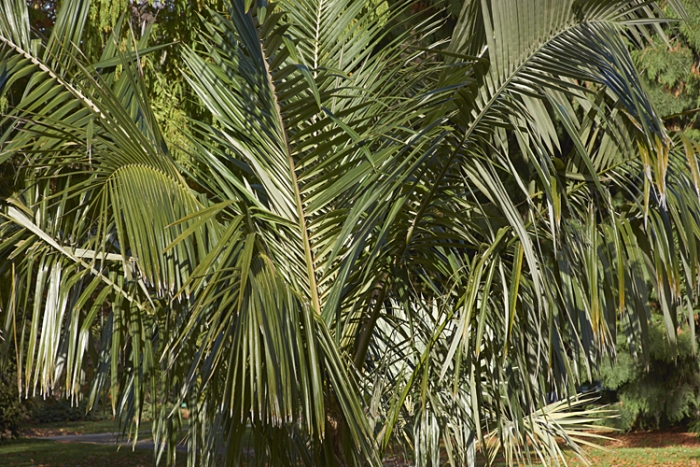Bolivian Mountain Coconut
(Parajubaea torallyi)
Bolivian Mountain Coconut (Parajubaea torallyi)
/
/

Hortiphoto Previously published: http://www.botanicalstockphotos.com/photo-parajubaea-torallyi-20153.htm
CC BY-SA 3.0
Image By:
Hortiphoto Previously published: http://www.botanicalstockphotos.com/photo-parajubaea-torallyi-20153.htm
Recorded By:
Copyright:
CC BY-SA 3.0
Copyright Notice:
Photo by: Hortiphoto Previously published: http://www.botanicalstockphotos.com/photo-parajubaea-torallyi-20153.htm | License Type: CC BY-SA 3.0 | License URL: https://creativecommons.org/licenses/by-sa/3.0 | Uploader: Hortiphoto | Publisher: Wikimedia Commons | Title: Parajubaea_torallyi_CFGs395.jpg | Notes: {{Information |Description ={{en|1=Climbing roots of Virginia creeper in the Manie van der Schijff Botanical Garden, Pretoria}} |Source ={{Own}} |Author =[[User:JMK|J

















Estimated Native Range
Summary
Parajubaea torallyi, commonly known as Bolivian Mountain Coconut, is an evergreen palm native to the high Andean valleys of Bolivia, where it thrives in dry, temperate climates. This palm is notable for its ability to withstand cold temperatures down to -13 degrees Celsius (9 degrees Fahrenheit), which is unusual for a palm species. It can reach over 13 meters in height and develops a thick, fibrous trunk. The pinnate leaves can be quite long, adding to its tropical appearance. The fruits, or cocos, are about 5–10 cm in diameter and grow in clusters that can weigh up to 15 kg. They are not true coconuts but resemble them in appearance.
The Bolivian Mountain Coconut is cultivated primarily for its ornamental properties, including its impressive stature and cold hardiness. It is suitable for planting in parks, large gardens, and as a focal point in landscapes. It requires a mild or cool climate without temperature extremes and prefers a neutral to acidic soil. While it tolerates drought, it does not do well with excess water. In cultivation, it generally does best in full sun or part shade, with low or medium amounts of water, and in soils with medium or fast drainage. This palm is relatively low-maintenance but may require protection from heavy frosts in cooler climates.CC BY-SA 4.0
The Bolivian Mountain Coconut is cultivated primarily for its ornamental properties, including its impressive stature and cold hardiness. It is suitable for planting in parks, large gardens, and as a focal point in landscapes. It requires a mild or cool climate without temperature extremes and prefers a neutral to acidic soil. While it tolerates drought, it does not do well with excess water. In cultivation, it generally does best in full sun or part shade, with low or medium amounts of water, and in soils with medium or fast drainage. This palm is relatively low-maintenance but may require protection from heavy frosts in cooler climates.CC BY-SA 4.0
Plant Description
- Plant Type: Tree
- Height: 15-60 feet
- Width: 15-25 feet
- Growth Rate: Moderate
- Flower Color: N/A
- Flowering Season: Non-Flowering
- Leaf Retention: Evergreen
Growth Requirements
- Sun: Full Sun, Part Shade
- Water: Low, Medium
- Drainage: Medium, Fast
Common Uses
Drought Tolerant
Natural Habitat
High Andean valleys in Bolivia
Other Names
Common Names: Palma De Pasobaya
Scientific Names: , Parajubaea torallyi, Diplothemium torallyi, Allagoptera torallyi, Jubaea torallyi, Polyandrococos torallyi,
GBIF Accepted Name: Parajubaea torallyi (Mart.) Burret